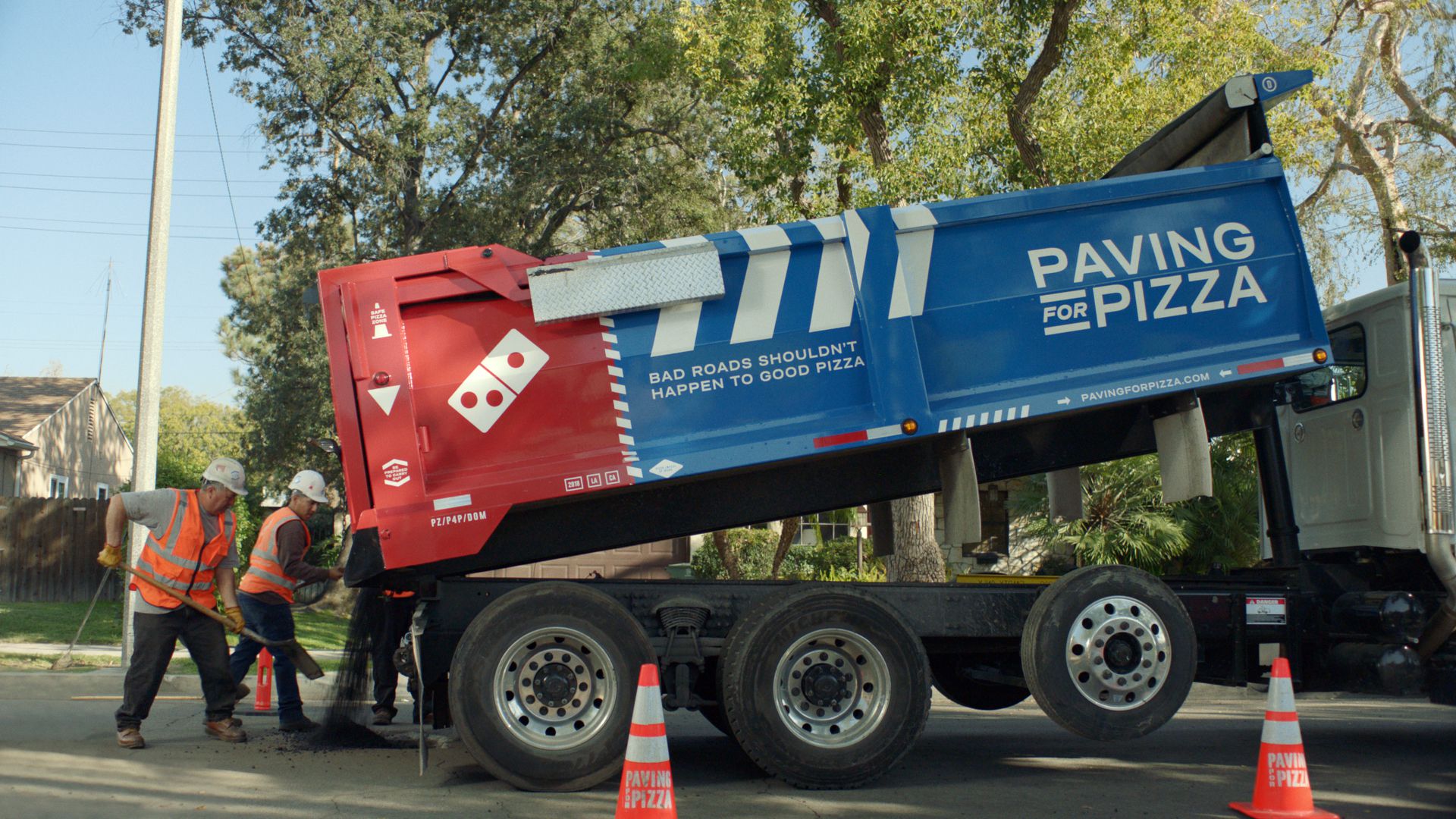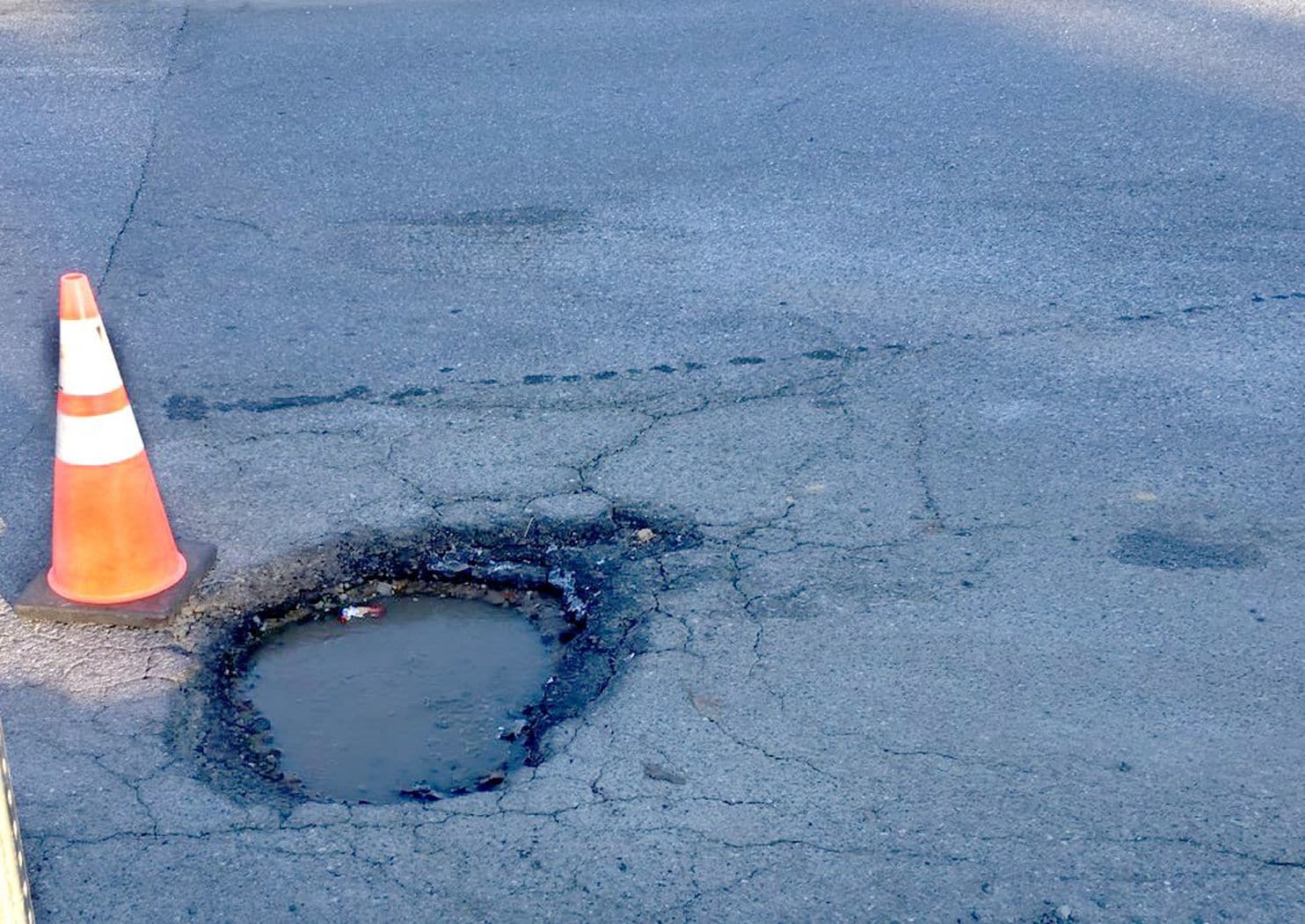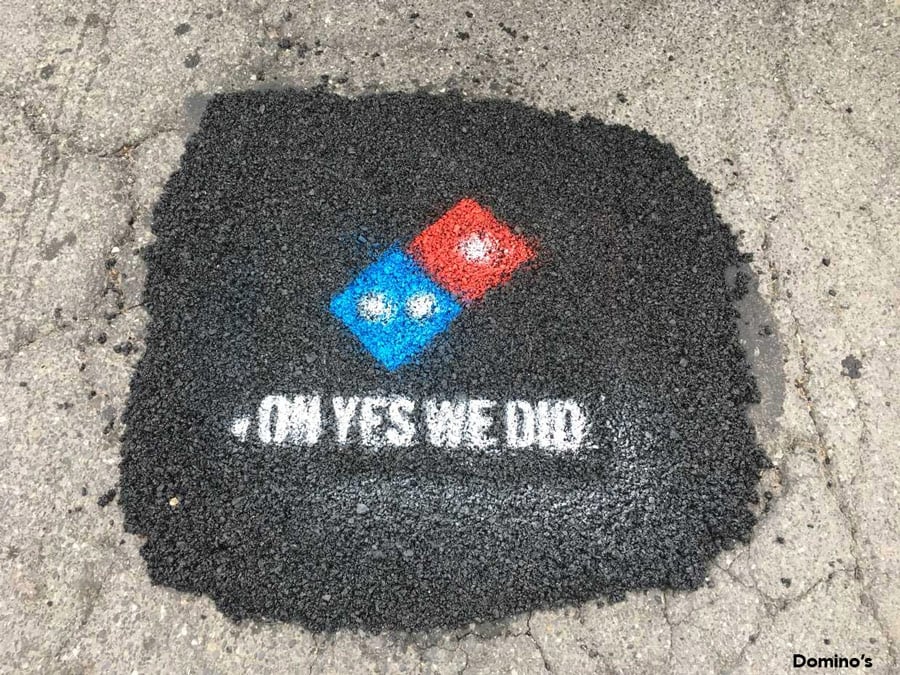You’ve just purchased a piping hot pizza. Pepperoni. Extra cheese. Just how you like it. You open the passenger’s side door and rest the box on the seat, buckling it in with the care of a first-time parent bringing their newborn home from the hospital.
“We’ll be home soon,” you whisper, more to yourself than to the pizza.
You dart around the front of the car, hop into the driver’s seat, let out a squeal of delight, slam the door and peel off...only to hit a pothole. You’re fine, the tires are in decent shape, but the pizza has suffered a serious case of whiplash. You open the box to learn that the toppings are tragically askew. We’ve all been there. At least that’s what Domino’s Pizza wants to convince us with its new marketing campaign.
A Pizza the Pie
Last week, the restaurant chain launched Paving for Pizza—a mission to “save pizzas” from the “irreversible damage” that potholes and bumps in the road can cause. Domino’s has funded road repairs in four United States municipalities—Athens, Georgia; Bartonville, Texas; Burbank, California and Milford, Delaware— and urges Americans to visit pavingforpizza.com and enter their zip code to nominate their hometown to be next in line.
Even if Domino’s receives zero nominations, the campaign is a success. The stunt has placed Domino’s in the media spotlight, spawning thinkpieces on the state of America’s infrastructure as well as where the onus of municipal maintenance should lie.

Domino's Paving for Pizza campaign has sparked a necessary conversation about America's infrastructure.
Jalopnik, a site dedicated to automobiles and transportation, believes that the onus lies squarely on municipal government. According to Jalopnik, Paving for Pizza is “less emblematic of corporate philanthropy than something from a William Gibson cyberpunk dystopia novel, where the government has become so weak and useless, private corporations have been taking over the basic upkeep of the nation.”
The Twittersphere joined in. One critic sees Paving for Pizza as “a sign of both how horribly infrastructure has crumbled in America and how much power we have ceded corporations,” while another likens it to the trend of “funding our healthcare through GoFundMe.”
Of course, Domino’s can’t pave roads and fill potholes without municipalities’ consent. In an op-ed published in the Washington Post, Milford, Delaware city manager, Eric Norenberg, defends his decision to let the pizza chain fill his district’s potholes. Delaware is known for being a low-tax state, he explains. A small budget means that he often has to choose between allocating funds to the police department and paying for necessary infrastructural repairs.
Besides, Norenberg reasons, Domino’s conducts its campaign in a way that preserves beneficiary cities’ dignity. “In exchange for a $5,000 check, Domino’s wanted its logo and a tagline saying “Oh yes we did” in spray chalk on the road next to each repair. The company also wanted photos— before-and-after shots. It didn’t want to send a video crew. It didn’t want high-resolution images. It wanted cellphone pictures of a bunch of guys patching potholes. Our maintenance team rolled out our new patching system and got to work. In two weeks, they fixed more than 40 potholes of different sizes—about 20 to 25 percent of the potholes that appeared after the winter. The chalk was gone after the first rain.”

Milford, DE is one of four US cities that benefitted from Domino's controversial Paving for Pizza campaign.

Oh Yes GovPilot Can
Whether you view Domino’s Paving for Pizza campaign as a well-intentioned initiative or as a symptom of America’s increasing infrastructural degradation and commercialization, we’re sure you can agree that a pizza chain publicly paying for your city’s street repair is a fate best avoided, if possible. With GovPilot, it is.
The situation Norenberg describes—of a local government administration agonizing over which critical area to allocate a portion of its meager, thinly stretched budget to—is familiar to municipalities across the US. We developed the GovPilot platform with this in mind. Instead of purchasing a management system for each department, GovPilot clients upgrade operations on a process by process basis. Our system’s flexibility allows them to adopt automated processes in an order and at a pace that fits their budget.
Budget restrictions are not the only reason US cities struggle to repair infrastructure in a timely manner. Many city managers are overwhelmed, short-staffed or both, creating a work environment in which it is hard to prioritize. GovPilot helps with tracking and prioritization as well. Automated workflows mimic clients’ longstanding order of operations and chain of comand to streamline and standardize processes, ensuring that projects don’t slip through the cracks. The platform’s geographic information system (GIS) map can be customized to display the sites of constituent reported hazards, project status and other data that forms the foundation of clear and actionable plans.

Don’t let Domino’s fill your potholes before you can! Adopt GovPilot government software and pick up the pace of progress.





